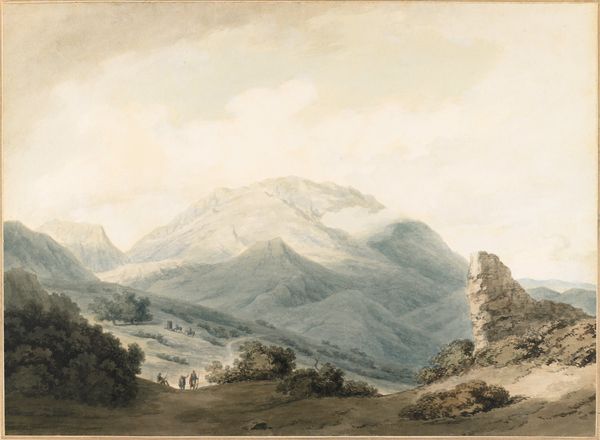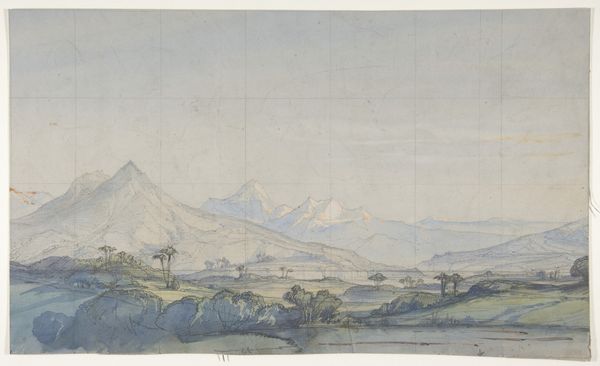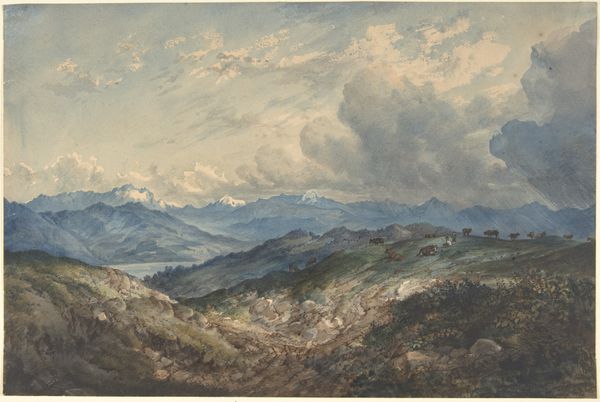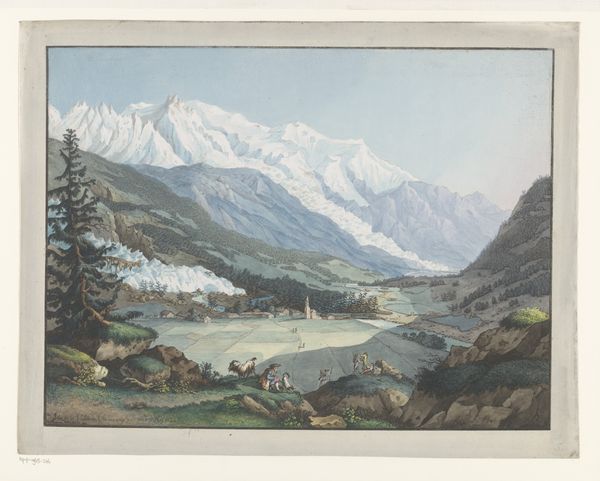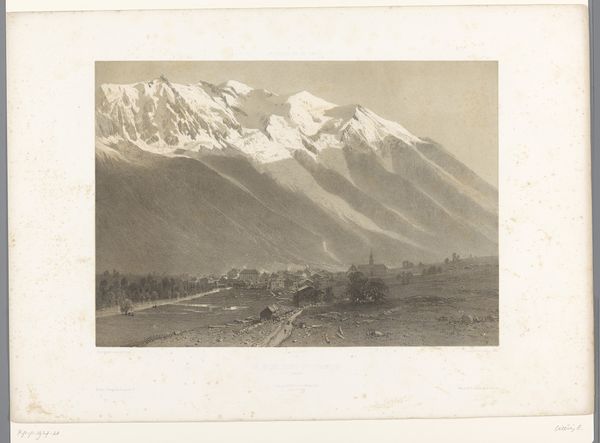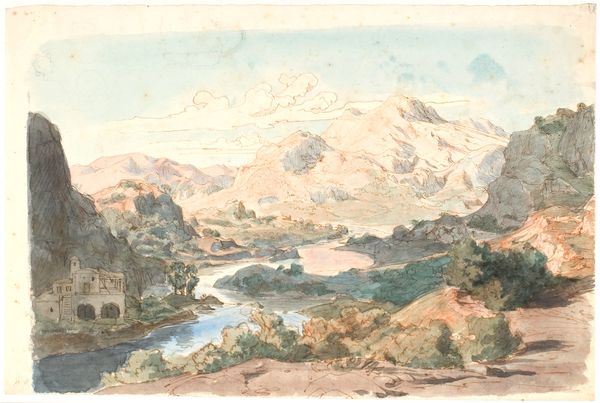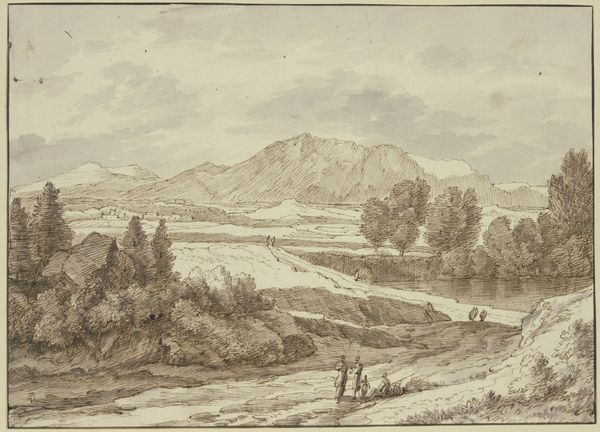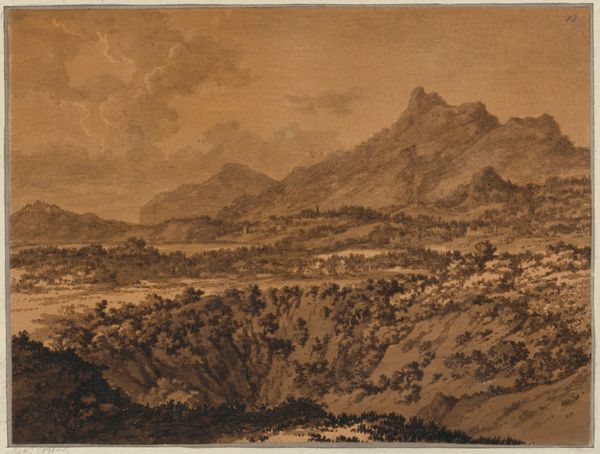
drawing, painting, plein-air, watercolor
#
drawing
#
16_19th-century
#
water colours
#
painting
#
plein-air
#
landscape
#
watercolor
#
romanticism
#
cityscape
#
realism
Copyright: Public Domain
Editor: Here we have "Mountainscape," a watercolor drawing of a landscape by Eduard Wilhelm Pose from the 19th century. It’s quite calming; the muted colors give it a hazy, dreamlike quality. What do you see in this piece beyond just a pretty landscape? Curator: What strikes me is how Pose's "Mountainscape," though seemingly a straightforward landscape, subtly challenges notions of power and perspective inherent in landscape painting. Think about it – who gets to represent landscape, and whose narratives are centered? Editor: So you mean who traditionally has access to the medium, and who doesn't? Curator: Exactly. We see here an embrace of the plein-air approach, a move towards a democratisation of art making, breaking away from the studio. The romantic ideal often masked a power dynamic: man over nature, the artist over the land. Pose, in a way, is negotiating that power. What do you make of the almost blurred, soft rendering? Editor: I see it adding to the tranquil, detached mood. It makes the scene feel vast, timeless. Curator: Perhaps. But could it also represent an acknowledgment of nature's untamable spirit? A visual language to push back against that historical urge to dominate? The choice of watercolour further softens any hard lines that suggest an artificial delineation. Editor: I hadn’t considered that – how technique and medium contribute to this underlying narrative about control and respect in how we visually encounter the world around us. Thank you, it offers such a refreshing interpretation. Curator: And you've shown that looking at any artwork this closely always gives us more.
Comments
No comments
Be the first to comment and join the conversation on the ultimate creative platform.

